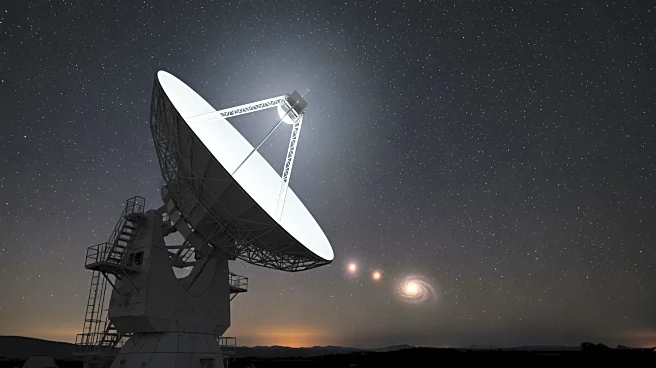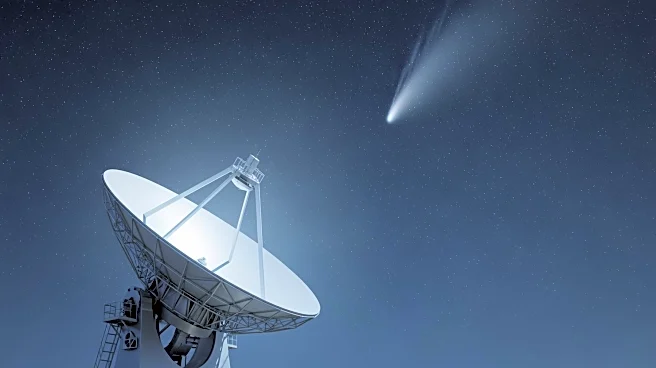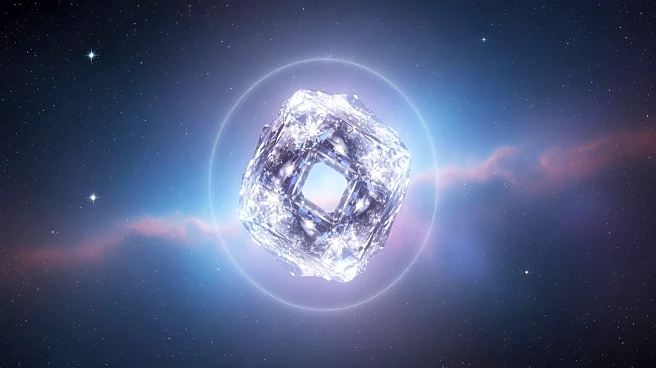What's Happening?
The MeerKAT radio telescope in South Africa conducted a search for radio transmissions from the interstellar object 3I/ATLAS, detecting 23,689 signals. However, none were consistent with the object's position,
indicating they were likely human-made interference. The search aimed to identify technological signatures, but the findings suggest 3I/ATLAS is not a technological object. The telescope established a detection limit equivalent to a mobile phone's power output at the object's distance. NASA plans to release new data from observations, including images from the Mars Reconnaissance Orbiter.
Why It's Important?
The absence of technological signals from 3I/ATLAS supports the conclusion that it is a natural comet rather than an alien artifact. This finding is crucial for maintaining scientific integrity and focusing research on understanding natural phenomena. The search for extraterrestrial technology is a significant aspect of astrobiology, and ruling out 3I/ATLAS as a technological object helps refine search criteria for future investigations. The data release by NASA will provide additional insights into the comet's characteristics, aiding in the study of interstellar objects.
What's Next?
NASA's upcoming data release will include images and information from various observations, offering a comprehensive view of 3I/ATLAS. Researchers will analyze this data to further understand the comet's composition and behavior. The scientific community may continue to monitor 3I/ATLAS as it approaches Earth, using advanced telescopes and instruments to gather more information. This ongoing research will contribute to the broader field of astronomy and the study of interstellar objects, potentially leading to new discoveries.











